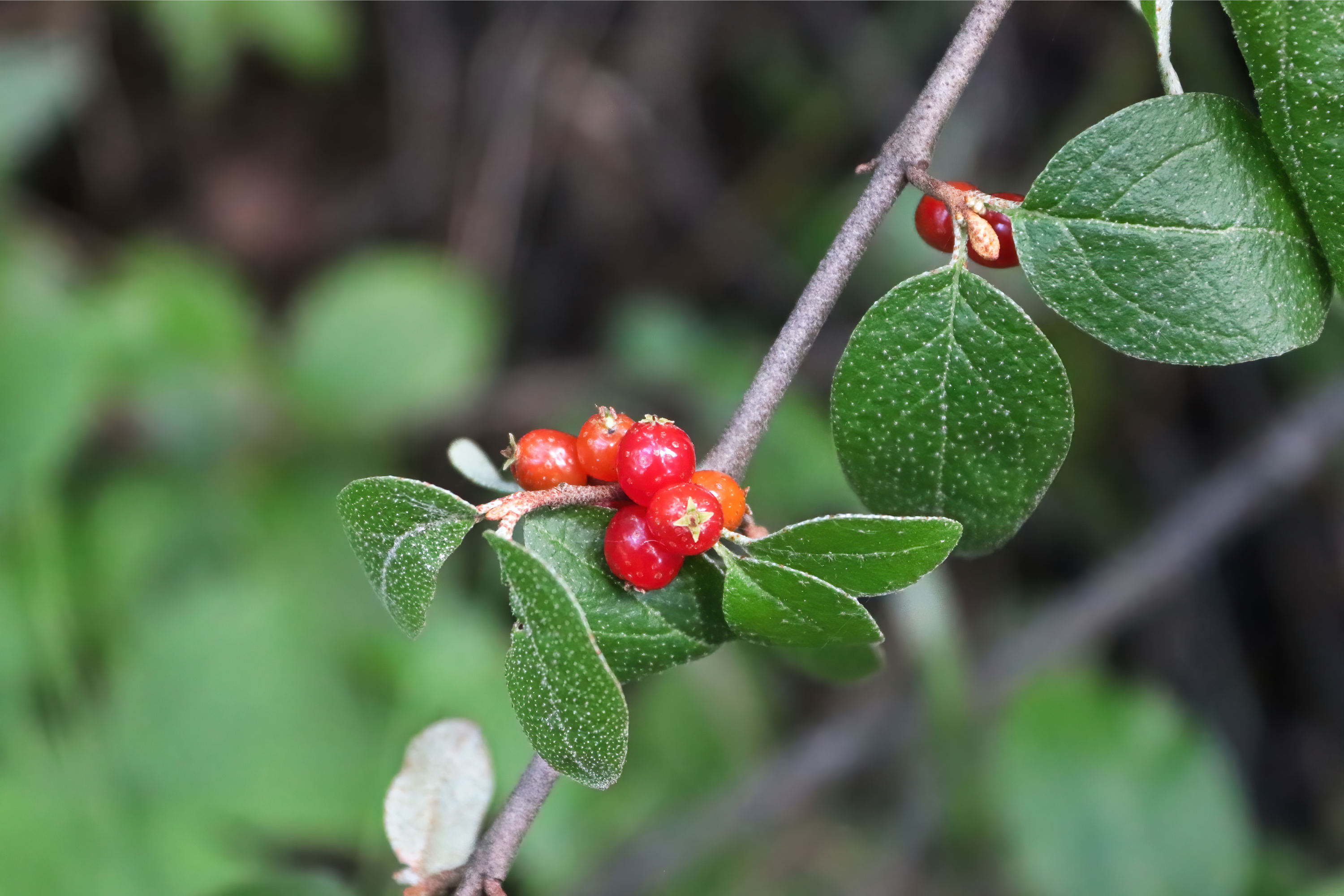"Russet buffaloberry buffalo-berry Canadian buffaloberry "
(Shepherdia canadensis)

Description
Shepherdia canadensis, commonly called Canada buffaloberry, russet buffaloberry, soopolallie, soapberry, or foamberry is one of a small number of shrubs of the genus Shepherdia that bears edible berries. The fruit is usually red, but one variety has yellow berries. The berries have a bitter taste. The species is widespread in all of Canada, except in Prince Edward Island, and in the western and northern United States, including Alaska and Idaho. The plant is a deciduous shrub of open woodlands and thickets, growing to a maximum of 1–4 m (3.3–13.1 ft). Some Canadian First Nations peoples such as Nlaka'pamux (Thompson), St'at'imc (Lillooet), and Secwepemc (Shuswap) in the Province of British Columbia extensively collect the berries. The bitter berries are not directly consumed but rather processed as "sxusem", also spelled "sxushem" and "xoosum" or "hooshum" ("Indian ice cream"). Collection involves placing a mat or tarpaulin below the bushes, hitting the branches, collecting the very ripe fruits, mixing with other sweet fruit such as raspberries, crushing the mixture, and then beating of the mixture to raise the foam characteristic of the dish. The berry is both sweet and bitter, and is possibly comparable to the taste of sweetened coffee. The First Nations peoples who prepare a dish with it believe that the berry has many healthy properties, but the saponin chemicals it contains (which create a foam when whipped into a dessert dish) may cause gastrointestinal irritation if large quantities are consumed. Native-themed restaurants in British Columbia have occasionally offered the berries on their menus. Unrelated plants in the genus Sapindus produce very toxic saponins and are also commonly denominated "soapberry" along with the edible Canada buffaloberry. The common name of the plant in British Columbia is "soopolallie", a word derived from the historic Chinook Jargon trading language spoken in the North American Pacific Northwest in the 19th and early 20th centuries. The name is a composite of the Chinook words "soop" (soap) and "olallie" (berry).
Taxonomic tree:







